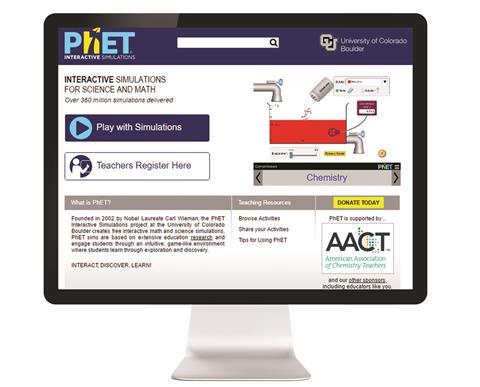Web Watch: A revamped, expanded and unmissable resource
The PhET (physics education technology) simulations have been around for several years and in my opinion the project is one of the best uses of the Nobel prize money. In 2001, Carl Wieman used his winnings to help set-up a set of interactive physics simulations. Based at the University of Colorado Boulder, US, the project has been expanded in recent years to include chemistry related simulations.
Since 2014, the simulations have been getting a bit of modernisation thanks, in part, to the Royal Society of Chemistry. This means that many simulations are now in HTML5 and will therefore now work on pretty much any device.
There are currently nearly 40 chemistry related simulations (around half of which run in HTML5). These allow the user to manipulate scenarios and discover a variety of phenomena across a broad range of topics from the structure of the atom through to states of matter and even into global warming and wave simulations.
The molecular polarity simulation is particularly good. I use this to introduce the concept of polarity, getting my pupils using it themselves before the lesson. But, these simulations can be used to enhance theoretical and practical lessons pretty much anywhere you feel comfortable using them.
Each simulation is generally quite simple, intuitive and gives instant results. And I find they encourage my students to work independently.
There is also a community around PhET that has given rise to a variety of resources for each simulation. While a few of these are little more than instructions for use, there are some gems out there.
The one weakness with these simulations is the rather dated look of the site itself. It would be great to be able to filter a search, store favourites, comment on or rate good resources within the community. However, this is just cosmetic and at the end of the day it’s the outstanding content that makes this resource unmissable.










2 readers' comments